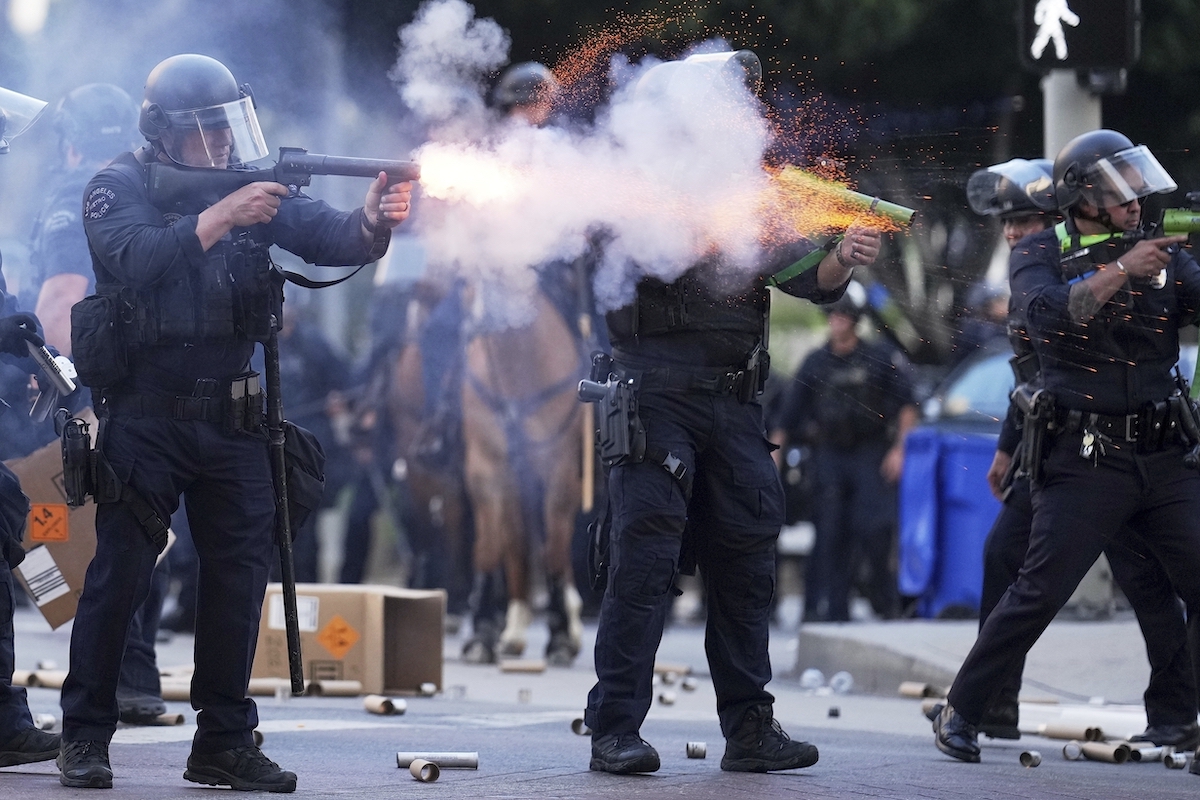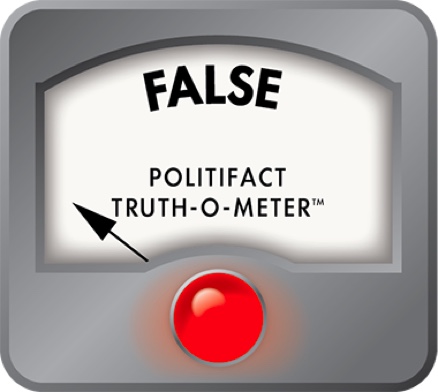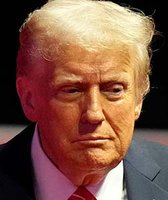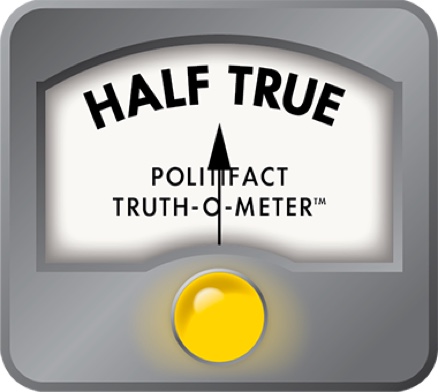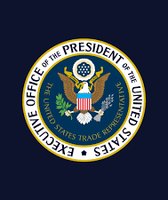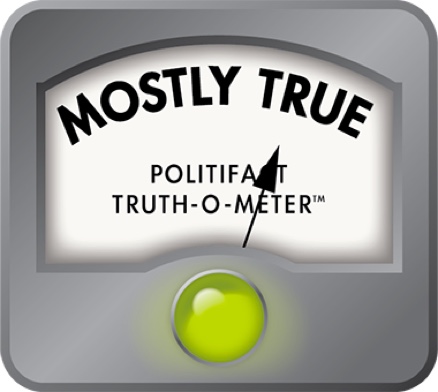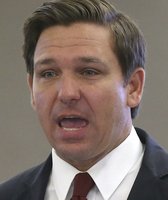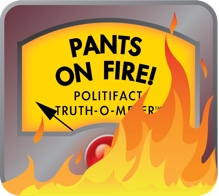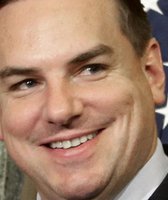Stand up for the facts!
Our only agenda is to publish the truth so you can be an informed participant in democracy.
We need your help.
I would like to contribute
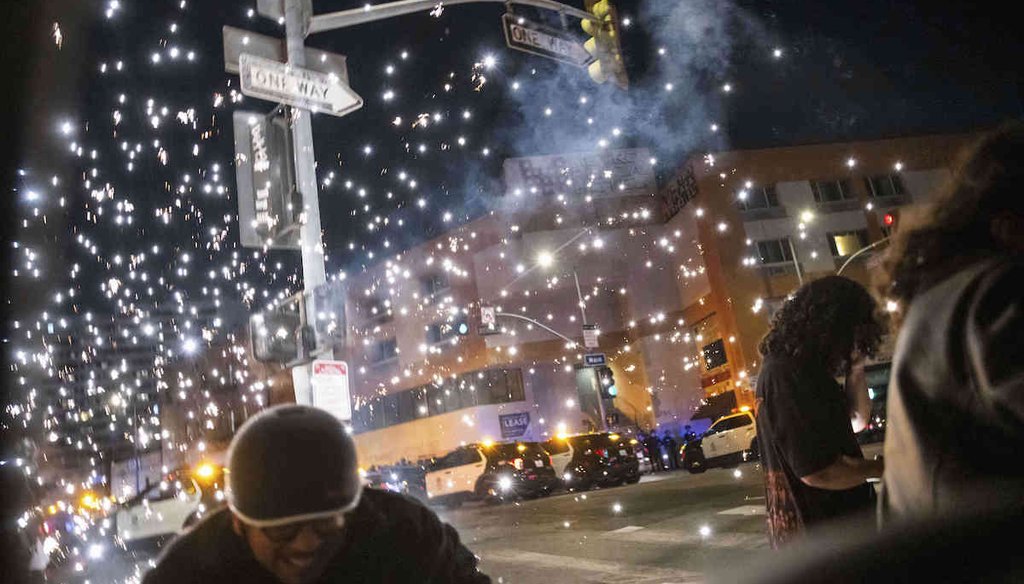
People take cover as a fire work explodes during a protest near the Metropolitan Detention Center in downtown Los Angeles, June 8, 2025 (AP)
If Your Time is short
-
The U.S. president typically cannot order the U.S. military to engage in domestic law enforcement, but there are exceptions.
-
The 1807 Insurrection Act allows states to request federal assistance and allows the president, in limited circumstances, to deploy military personnel in the U.S. without a state’s consent.
-
President Donald Trump did not invoke the Insurrection Act in a June 7 memo that deployed the California National Guard to Los Angeles. He cited a federal law that says if the U.S. faces a rebellion, the president may call into federal service the state National Guard.
As President Donald Trump and California Gov. Gavin Newsom battled over the federal government deploying National Guard troops to Los Angeles, the Trump administration also sent in U.S. Marines.
"Well, we're gonna have troops everywhere," Trump told reporters June 8.
When asked about the standard for deploying active duty military, which is unusual, Trump said, "The bar is what I think it is. I mean, if we see danger to our country and to our citizens, uh, we'll be very, very strong in terms of law and order."
The protests in downtown Los Angeles began June 6 in response to reports of Immigration and Customs Enforcement raids.
But the standard to dispatch the military to a state is not simply in the eye of the beholder. There are limited legal circumstances in which a president is supposed to deploy the military domestically. The law Trump cited allows him to use National Guard troops to protect federal personnel and property, but not for broad law enforcement functions.
U.S. Northern Command said June 9 that approximately 700 Marines it was sending would "integrate" with other forces "protecting federal personnel and federal property in the greater Los Angeles area." That means they have the same mission as the National Guard. The administration initially placed 2,000 National Guard troops under federal command and then announced an additional 2,000.
Marines arrived in the LA area June 10.
Newsom filed a lawsuit challenging Trump’s memo calling into federal service the California National Guard.
Experts on domestic federal military involvement said Trump’s actions stretch the law.
Typically, a president is supposed to only deploy the state National Guard "in a situation where there is a rebellion or he can’t enforce the law with tools available to them or there is an invasion," Scott R. Anderson, a Brookings Institution fellow in governance studies, said. "None of those conditions were clearly met in California at the time that the president issued his memorandum. So the real question is how much is the court going to defer to what the president says is a rebellion? We don’t know."
In sending the California National Guard, Trump did not cite the 1807 Insurrection Act, which allows the president to deploy military personnel on U.S. soil without the consent of a state.
"Instead, the president has relied on a far more limited (though also quite old) theory of inherent presidential authority known as the protective power," wrote Chris Mirasola, University of Houston assistant law professor, in an essay for Lawfare.
That protective power does not extend to allowing law enforcement functions such as making arrests.
The Los Angeles Police Department arrested dozens of protesters over the weekend. The department declared the protests, which included vandalism and burning cars, an "unlawful assembly" on June 6 and used tear gas and rubber bullets on the crowds.
What is the law Trump cited to send in the National Guard?
Trump issued a June 7 memo calling for the federalized National Guard under section 12406 of Title 10 of the U.S. Code. The memo said "at least 2,000 National Guard" personnel shall be called to "temporarily protect" federal government employees, including Immigration and Customs and Enforcement officers, and federal property.
Federalizing the state National Guard means it is under federal command and control. So the Trump administration is in charge — not California officials.
The memo also said the defense secretary could deploy other members of the U.S. armed forces. The memo doesn’t mention Los Angeles or any specific location.
"This is kind of disturbingly broad," said Laura A. Dickinson, George Washington University law professor and expert on armed conflict law.
Experts couldn’t recall other circumstances in which there was such a presidential action without limiting it geographically.
"If taken at face value it gives the president authority to deploy military forces anywhere on American soil," said Carrie A. Lee, a German Marshall Fund expert on military intervention and civil-military relations.
The federal law Trump cited states that when the U.S. faces a rebellion or danger of a rebellion and the president "is unable with the regular forces to execute the laws of the United States" the president may call into federal service the National Guard of any state. It also applies to when the U.S. is invaded by a foreign nation.
However, Mirasola told PolitiFact he was not aware of any circumstances in which this federal law was used without pairing it with invoking the Insurrection Act.
Joseph Nunn, counsel in the Brennan Center's liberty and national security program at NYU school of law, said, "The Marines cannot engage in law enforcement activities, such as performing crowd control or detaining civilians, under the authorities the administration has cited so far. The president would need to invoke the Insurrection Act before the Marines could take such a direct role."
Without invoking the Insurrection Act, Marines can’t provide core law enforcement functions such as arrest, search and seizures, Nunn said. But they can provide logistical support such as driving vans full of cots or police. Even standing by a federal building to protect it could put Marines in a difficult position. "It puts Marines in a legally risky position they are not trained for," Nunn said. "Soldiers are trained to be soldiers, they are not trained to be law enforcement."
The Insurrection Act temporarily suspends another U.S. law that forbids federal troops from conducting civilian law enforcement.
A 1975 Justice Department memo about the Insurrection Act says "the use of troops in these federal enforcement situations has been a last resort."
The Marines are now in an unusual situation. Military officers are trained to use lethal force against foreign adversaries. That’s different from the role of state and local law enforcement who are trained to enforce state and local laws and understand constitutional rights and the use of Miranda rights.
The Associated Press, citing unnamed sources, reported that the Pentagon is writing a memo that will spell out the steps Marines can take to protect federal personnel.
Trump’s memo said that the duration of the National Guard deployment would be "60 days or at the discretion of the Secretary of Defense."
During a June 10 Congressional hearing, a defense official estimated the cost of the deployment at $134 million, including housing and food.
A police officer fires a soft round near the Metropolitan Detention Center in downtown Los Angeles on June 8, following the previous night's immigration raid protest. (AP)
Federal troops last deployed in LA in 1992
Typically, the U.S. president cannot order the U.S. military to perform law enforcement duties domestically.
The most recent example of an exception came in May 1992, amid Los Angeles riots after the acquittals of law enforcement officers charged with beating Rodney King, a Black motorist. In that case, the Insurrection Act was invoked.
After declaring a local state of emergency, then-Los Angeles Mayor Tom Bradley requested then-Gov. Pete Wilson to deploy the National Guard, prompting President George H.W. Bush to invoke the act, activating 2,000 reserve soldiers.
So far, the property damage and dozens of arrests pale in comparison to the scope of the 1992 protests is not comparable to what has happened in Los Angeles. In 1992, more than 60 people died, 12,000 were arrested and protesters caused $1 billion in damages.
Limited circumstances allow the president to order federal troops into a state without that state’s consent. Instances include when rebellion is so severe that courts are unable to enforce federal law or citizens are "deprived" of "constitutional rights," as outlined in sections 252 and 253 of the Insurrection Act.
Presidents Lyndon B. Johnson, Dwight D. Eisenhower and John F. Kennedy used these provisions in Arkansas, Alabama and Mississippi to enforce civil rights laws.
This is not the first time Trump has summoned the National Guard to squash protests.
In response to looting and violence following the May 2020 death of George Floyd by Minneapolis police officers, Trump called on governors to deploy the National Guard to "dominate the streets."
Thousands of National Guard troops from 11 states were sent to Washington, D.C., with "the mission of protecting federal functions, persons, and property within the District of Columbia," wrote then-U.S. Attorney General William Barr in a letter to D.C. Mayor Muriel Bowser.
If state or city leaders failed to comply, Trump threatened to invoke the Insurrection Act to send U.S. military and "and quickly solve the problem for them."
Then-Defense Secretary Mark Esper contested this, saying the 1807 law should be used "only in the most urgent and dire of situations."
Esper also told NPR in May 2022 that Trump asked about shooting protesters in 2020.
Ultimately, Trump never invoked the Insurrection Act during his first term.
RELATED: Timeline: Was the California National Guard at LA protests when Trump thanked them?
Our Sources
Presidential memoranda, Department of Defense Security for the Protection of Department of Homeland Security Functions, June 7, 2025
Cornell Law School, 10 U.S. Code § 12406 - National Guard in Federal service: call, Accessed June 9, 2025
Roll Call, Press Gaggle: Donald Trump Speaks to Reporters Before Air Force One Departure, June 8, 2025
U.S. District Court Northern District of California, Newsom v Trump, June 9, 2025
Defense Secretary Pete Hegseth, X post, June 7, 2025
Defense Secretary Pete Hegseth, X post, June 8, 2025
Gov. Gavin Newsom, X post, June 9, 2025
President Donald Trump’s Truth Social post, June 8, 2025
Los Angeles Mayor Karen Bass’ X Post, June 8, 2025
Los Angeles Police Department’s X Post, June 8, 2025
The United States Northern Command X Post, June 8, 2025
The United States Northern Command X Post, June 8, 2025
The United States Northern Command X Post, June 8, 2025
USNORTHCOM, Statement on additional military personnel in the Los Angeles Area, June 9, 2025
Associated Press, Pentagon draws up rules on possible use of force by Marines deployed to LA protests, June 9, 2025
Brennan Center, The President’s Power to Call Out the National Guard Is Not a Blank Check, Nov. 18, 2024
New York Times, Live Updates: Marines Arrive in L.A. After Night of Muted Protests, June 10, 2025
Gov. Gavin Newsom’s X post, June 8, 2025
Gov. Gavin Newsom’s X post, June 8, 2025
Vice President JD Vance’s X post, June 8, 2025
The New York Times, Maps and Timeline of the L.A. Immigration Protests and the Federal Response, June 8, 2025
CNN, Trump praises National Guard despite no evidence they are on the ground in LA, June 8, 2025
Brennan Center for Justice, Guide to Declarations of Martial Law in the United States, Aug. 20, 2020
Cornell Law School Legal Information Institute, 10 U.S. Code Subtitle A Chapter 13 Part I - INSURRECTION, accessed April 10, 2025
The Brennan Center, Martial Law in the United States: Its Meaning, Its History, and Why the President Can’t Declare It, Aug. 20, 2020
The Brennan Center, The Insurrection Act Explained, April 21, 2022
Georgetown law professor, Steve Vladeck, One First substack, 156. Federalizing the California National Guard, June 7, 2025
Chris Mirasola, Lawfare, The National Guard in Los Angeles, June 8, 2025
Laura A. Dickinson, How the Insurrection Act (Properly Understood) Limits Domestic Deployments of the U.S. Military, Sept. 12, 2024
Justice Department, Authority to Use Troops to Prevent Interference With Federal Employees by Mayday Demonstrations and Consequent Impairment of Government Functions, April 29, 1971
Mark Esper, Transcript: Secretary of Defense Esper Addresses Reporters Regarding Civil Unrest, June 3, 2020
PolitiFact, Insurrection Act vs. martial law: What power applies to Trump’s April 20 deadline? April 16, 2025
PolitiFact, Can Donald Trump really invoke the Insurrection Act to send troops into states? June 2, 2020
AP News, "What to know about Trump’s deployment of National Guard troops to LA protests," June 9, 2025
U.S. Department of Defense, "Planning and Execution Timeline for the National Guard’s Involvement in the January 6, 2021 Violent Attack at the U.S. Capitol," Jan. 8, 2021
U.S. National Guard, "DOD details National Guard response to Capitol attack," Jan. 8, 2021
PolitiFact, "No evidence Pelosi ‘rejected’ Trump’s authorization for ‘20,000 National Guard’ before Jan. 6 attack," June 13, 2022
PolitiFact, "Can Donald Trump really invoke the Insurrection Act to send troops into states?" June 2, 2020
District of Columbia National Guard, "About Us"
NPR, "Former Pentagon chief Esper says Trump asked about shooting protesters," May 9, 2022
NBC News, "Trump says he will deploy military if state officials can't contain protest violence," June 1, 2020
NBC News, "Meet the Press," June 8, 2025
L.A. Times, "Understanding the Riots / Part 3: Witness to Rage: How the Riots Developed," May 13, 1992
California Attorney General, Attorney General Bonta, Governor Newsom Challenge Trump Order Seeking to Federalize California National Guard, June 9, 2025
Sean Parnell, assistant secretary of defense, X post, June 9, 2025
Telephone with Chris Edelson, assistant professor of government at American University, June 9, 2025
Email interview, Scott R. Anderson, fellow in governance Studies at the Brookings Institution Brookings Institution, June 9, 2025
Telephone interview, Joseph Nunn, counsel in the Brennan Center's Liberty and National Security Program, June 9, 2025
Telephone interview, Carrie Lee, senior fellow with the German Marshall Fund of the United States, June 9, 2025
Email interview, Chris Mirasola, University of Houston assistant law professor, June 9, 2025
Email interview, Laura A. Dickinson, George Washington University law professor, June 9, 2025
White House, Statement to PolitiFact, June 9, 2025
Email interview, Diana Crofts-Pelayo, spokesperson, Gov. Gavin Newsom, June 9, 2025


